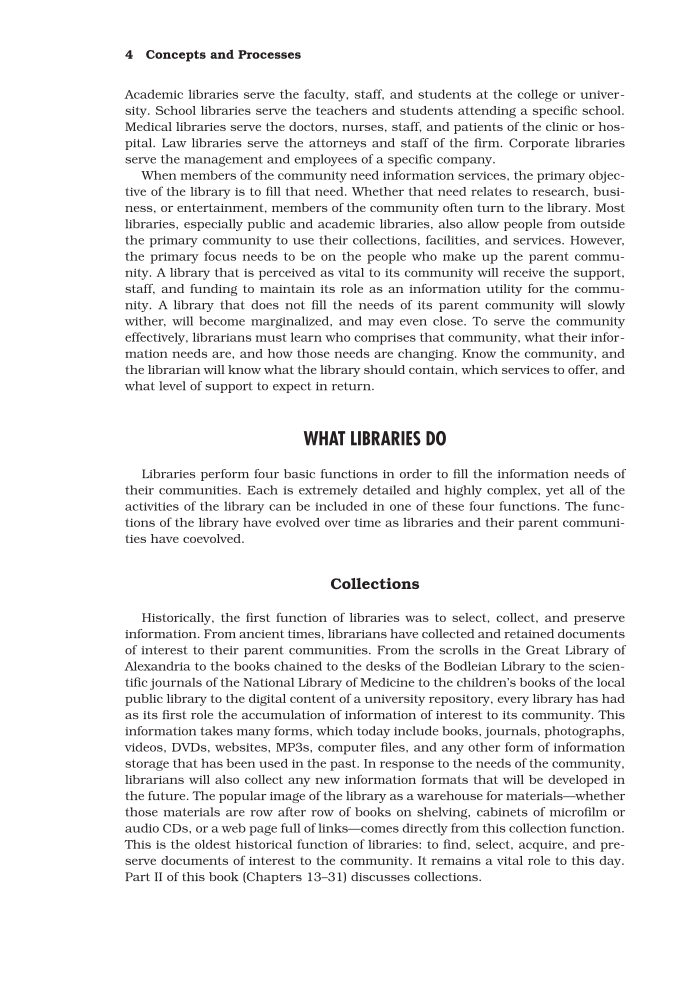4 Concepts and Processes Academic libraries serve the faculty, staff, and students at the college or univer- sity. School libraries serve the teachers and students attending a specific school. Medical libraries serve the doctors, nurses, staff, and patients of the clinic or hos- pital. Law libraries serve the attorneys and staff of the firm. Corporate libraries serve the management and employees of a specific company. When members of the community need information services, the primary objec- tive of the library is to fill that need. Whether that need relates to research, busi- ness, or entertainment, members of the community often turn to the library. Most libraries, especially public and academic libraries, also allow people from outside the primary community to use their collections, facilities, and services. However, the primary focus needs to be on the people who make up the parent commu- nity. A library that is perceived as vital to its community will receive the support, staff, and funding to maintain its role as an information utility for the commu- nity. A library that does not fill the needs of its parent community will slowly wither, will become marginalized, and may even close. To serve the community effectively, librarians must learn who comprises that community, what their infor- mation needs are, and how those needs are changing. Know the community, and the librarian will know what the library should contain, which services to offer, and what level of support to expect in return. WHAT LIBRARIES DO Libraries perform four basic functions in order to fill the information needs of their communities. Each is extremely detailed and highly complex, yet all of the activities of the library can be included in one of these four functions. The func- tions of the library have evolved over time as libraries and their parent communi- ties have coevolved. Collections Historically, the first function of libraries was to select, collect, and preserve information. From ancient times, librarians have collected and retained documents of interest to their parent communities. From the scrolls in the Great Library of Alexandria to the books chained to the desks of the Bodleian Library to the scien- tific journals of the National Library of Medicine to the children’s books of the local public library to the digital content of a university repository, every library has had as its first role the accumulation of information of interest to its community. This information takes many forms, which today include books, journals, photographs, videos, DVDs, websites, MP3s, computer files, and any other form of information storage that has been used in the past. In response to the needs of the community, librarians will also collect any new information formats that will be developed in the future. The popular image of the library as a warehouse for materials—whether those materials are row after row of books on shelving, cabinets of microfilm or audio CDs, or a web page full of links—comes directly from this collection function. This is the oldest historical function of libraries: to find, select, acquire, and pre- serve documents of interest to the community. It remains a vital role to this day. Part II of this book (Chapters 13–31) discusses collections.
Document Details My Account Print multiple pages
Print
You have printed 0 times in the last 24 hours.
Your print count will reset on at .
You may print 0 more time(s) before then.
You may print a maximum of 0 pages at a time.





























































































































































































































































































































































































































































































































































































































































































































































































